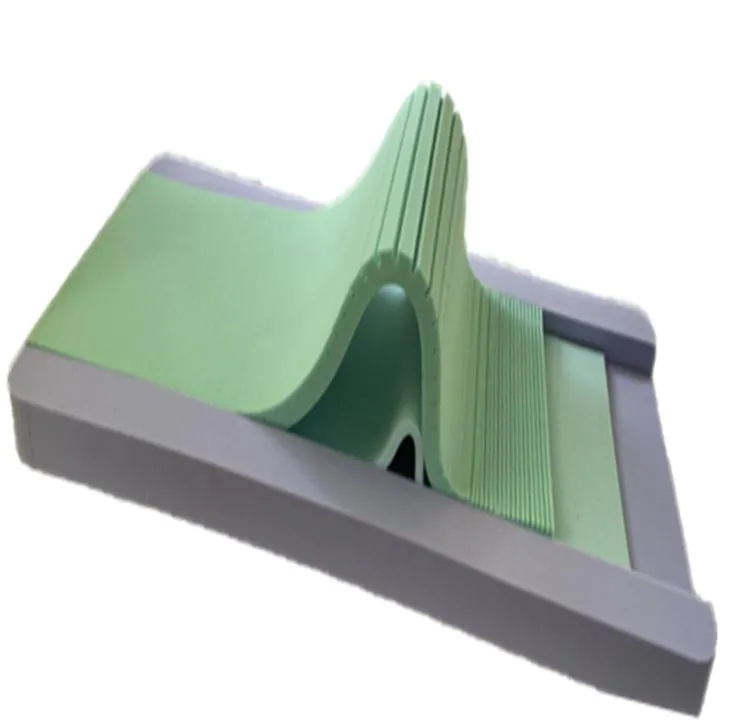Mattress for Pressure Point Relief
A mattress for pressure point relief is designed to support key areas like shoulders, hips, and lower back, where tension builds up most during sleep. These mattresses evenly distribute body weight, easing strain on joints and muscles. Whether you're a side sleeper or back sleeper, a mattress with pressure relief helps you wake up refreshed and free of aches.

Foam Pressure Mattress Is Ideal for Daily Use
A foam pressure mattress is lightweight, durable, and offers excellent cushioning. It molds to your body’s shape, minimizing friction and skin irritation. Often used in hospitals and home care, these mattresses help prevent pressure ulcers and are suitable for anyone needing long hours of rest. They are also easy to clean and maintain, making them perfect for everyday use.
Bed Sore Relief Mattress Helps with Long-Term Comfort
For patients recovering from surgery or those with limited mobility, a bed sore relief mattress can make a huge difference. It reduces prolonged pressure on the skin by using specialized foam or alternating air technology. These mattresses improve circulation, promote healing, and provide all-day comfort. They’re often recommended by caregivers and physical therapists.
Memory Foam Pressure Points Support Natural Alignment
Memory foam pressure points design targets the body's natural curves and pressure zones, offering customized support. The foam responds to heat and weight, providing a snug fit that relieves stress on pressure-sensitive areas. Great for people with arthritis, scoliosis, or chronic back pain, this option helps promote deep, undisturbed sleep.
Pressure Reducing Foam Mattress Prevents Discomfort
A pressure reducing foam mattress enhances sleep quality by decreasing pressure build-up and allowing better blood flow. The foam’s open-cell structure increases breathability, reducing heat retention and sweating. Whether for medical care or everyday use, this mattress is a solid investment in long-term comfort and health.
Pressure Reducing Foam Mattress FAQs
Who should use a mattress for pressure point relief?
Anyone who experiences joint pain, stiffness, or poor sleep quality can benefit, especially seniors and people with mobility issues.
How does a foam pressure mattress differ from regular foam?
It uses high-density foam with targeted pressure-relieving zones, unlike basic foam that offers uniform firmness.
Can a bed sore relief mattress be used at home?
Yes, it’s perfect for home use, especially for patients recovering from surgery or with reduced mobility.
Do memory foam pressure points help side sleepers?
Absolutely. They cushion shoulders and hips, aligning the spine for side sleepers more effectively than traditional mattresses.
Where can I buy a pressure reducing foam mattress?
Visit our website now for detailed specs, customer reviews, and secure online ordering. Choose comfort—choose smarter sleep!
Don’t ignore what your body is telling you. Upgrade to a pressure reducing foam mattress today and feel the difference. Explore our online store to compare features, get expert help, and find the perfect fit for your sleep needs. A good night’s rest is just one click away—shop now!
-
How Hospital Mattress Choices Directly Impact Patient Comfort and CareNovaĵojAug.05,2025
-
Hospital Mattress Topper Compatibility IssuesNovaĵojAug.05,2025
-
Choosing the Best Hospital Mattress for Home UseNovaĵojAug.05,2025
-
Blue Hospital Mattress Material Safety StandardsNovaĵojAug.05,2025
-
Best Firm Hospital Bed Mattress for Elderly: A Wholesaler’s Guide to Quality Care SolutionsNovaĵojAug.05,2025
-
Adjustable Bed Compatibility with Hospital MattressesNovaĵojAug.05,2025
-
Sleep Tracking Mattress GuideNovaĵojJul.28,2025
Pressure Point Relief Mattress - Advanced Support & Pain-Free Sleep
-
How Hospital Mattress Choices Directly Impact Patient Comfort and CareNovaĵojAug.05,2025
-
Hospital Mattress Topper Compatibility IssuesNovaĵojAug.05,2025
-
Choosing the Best Hospital Mattress for Home UseNovaĵojAug.05,2025
-
Blue Hospital Mattress Material Safety StandardsNovaĵojAug.05,2025
-
Best Firm Hospital Bed Mattress for Elderly: A Wholesaler’s Guide to Quality Care SolutionsNovaĵojAug.05,2025
-
Adjustable Bed Compatibility with Hospital MattressesNovaĵojAug.05,2025
-
Sleep Tracking Mattress GuideNovaĵojJul.28,2025

